NASA’s Europa Clipper spacecraft launched from Kennedy Space Center in Florida on Monday, Oct. 14. The Europa Clipper mission will conduct a detailed investigation of Jupiter’s moon Europa to determine whether there are places below its icy surface that could…
Tag: Jupiter
NASA’s Hubble Watches Jupiter’s Great Red Spot Behave Like a Stress Ball
Using Hubble, astronomers have discovered that Jupiter’s Great Red Spot (GRS) is not as stable as it might look. Hubble measurements of the GRS’s size, shape, brightness, color, and vorticity showed it can change dimensions—looking like a slightly skinnier or fatter red oval over 90 days.
Counting Rays: Aerial Surveys Reveal Ample Populations in Southeast Florida
A unique long-term study quantified the abundance of whitespotted eagle and giant manta rays in Southeast Florida. Researchers conducted 120 survey flights between 2014 and 2021 from Miami north to the Jupiter Inlet. One or both species were seen on nearly every flight and both populations appear to be stable in the region. The giant manta rays were more abundant in the south and the whitespotted eagle rays were found all along the coast. Neither species seems to be deterred by the greater human population density in Fort Lauderdale/ Miami.
NASA’s Webb Discovers New Feature in Jupiter’s Atmosphere
Jupiter has some of the most conspicuous atmospheric features in our solar system. The planet’s Great Red Spot, large enough to envelop Earth, is nearly as well known as some of the various rivers and mountains on the planet we call home.
However, much like Earth, Jupiter is ever-changing, and there’s much about the planet we have yet to learn. NASA’s James Webb Space Telescope is unlocking some of those mysteries, revealing new features of Jupiter we’ve never seen before, including a high-speed jet speeding over the planet’s equator. While the jet stream is not as visually apparent or stunning as some of Jupiter’s other features, it’s giving researchers incredible insight into how the layers of the planet’s atmosphere interact with each other, and how Webb will aid in these investigations in the future.
NASA’s Webb Finds Carbon Source on Surface of Jupiter’s Moon Europa
For as long as humans have gazed into the night sky, we have wondered about life beyond the Earth. Scientists now know that several places in our solar system might have conditions suitable for life.
From Dübendorf to Jupiter
JUICE, the European spacecraft that is scheduled to launch later today, will explore Jupiter and its icy moons. Some of the components on board have been manufactured at Empa using a specially developed soldering process.
Newly discovered form of salty ice could exist on surface of extraterrestrial moons
Scientists suspect that the red streaks crossing the surface of Jupiter’s moon Europa is a frozen mixture of water and salts, but its chemical signature matches no known substance on Earth. Now researchers have discovered a new type of solid crystal that forms when water and table salt combine in cold, pressurized conditions. Researchers believe the new substance created in a lab on Earth could form at the surface and bottom of these worlds’ deep oceans.
VLA and ALMA Study Jupiter and Io
VLA teams up with Juno spacecraft to study Jupiter’s atmosphere, and ALMA reveals new details about Io’s volcanoes.
‘Diamond rain’ on giant icy planets could be more common than previously thought
A new study has found that “diamond rain,” a long-hypothesized exotic type of precipitation on ice giant planets, could be more common than previously thought. In an earlier experiment, researchers mimicked the extreme temperatures and pressures found deep inside ice giants Neptune and Uranus and, for the first time, observed diamond rain as it formed.
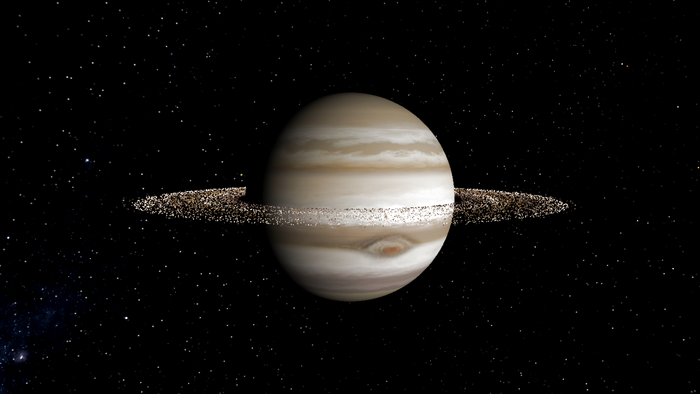
Why Jupiter doesn’t have rings like Saturn
Because it’s bigger, Jupiter ought to have larger, more spectacular rings than Saturn has. But new UC Riverside research shows Jupiter’s massive moons prevent that vision from lighting up the night sky.
Explanation for formation of abundant features on Europa bodes well for search for extraterrestrial life
Europa is a prime candidate for life in our solar system, and its deep saltwater ocean has captivated scientists for decades. But it’s enclosed by an icy shell that could be miles to tens of miles thick, making sampling it a daunting prospect. Now, increasing evidence reveals the ice shell may be less of a barrier and more of a dynamic system – and site of potential habitability in its own right.
Hubble Finds First Evidence of Water Vapor at Jupiter’s Moon Ganymede
Located ½-billion miles from the Sun, the water ice on Ganymede’s surface is frozen solid in frigid temperatures as low as minus 300 degrees Fahrenheit. This makes the ice as hard as rock. Still, a rain of charged particles from the Sun is enough to turn the ice into water vapor at high noon on Ganymede. This is the first time such evidence has been found, courtesy of the Hubble Space Telescope’s spectroscopic observations of aurora on Ganymede spanning two decades. The auroras are used to trace the presence of oxygen, which then is linked to the presence of water molecules sputtering off the surface. Ganymede has a deep ocean located an estimated 100 miles below the surface.
Weizmann Institute Scientists on the Juno Mission Reveal How Giant Cyclones Remain Stable at Jupiter’s Poles
A co-investigator on NASA’s Juno mission to Jupiter, Prof. Yohai Kaspi and his team have made discoveries about the gas giant’s climate: Each pole has several Australia-sized cyclones that rarely change their size, number, or position because massive polar storms keep them at bay, and strong jet streams won’t let them form below a certain latitude.
Life could exist in the clouds of Jupiter but not Venus
Jupiter’s clouds have water conditions that would allow Earth-like life to exist, but this isn’t possible in Venus’ clouds, according to the groundbreaking finding of new research led by a Queen’s University Belfast scientist.
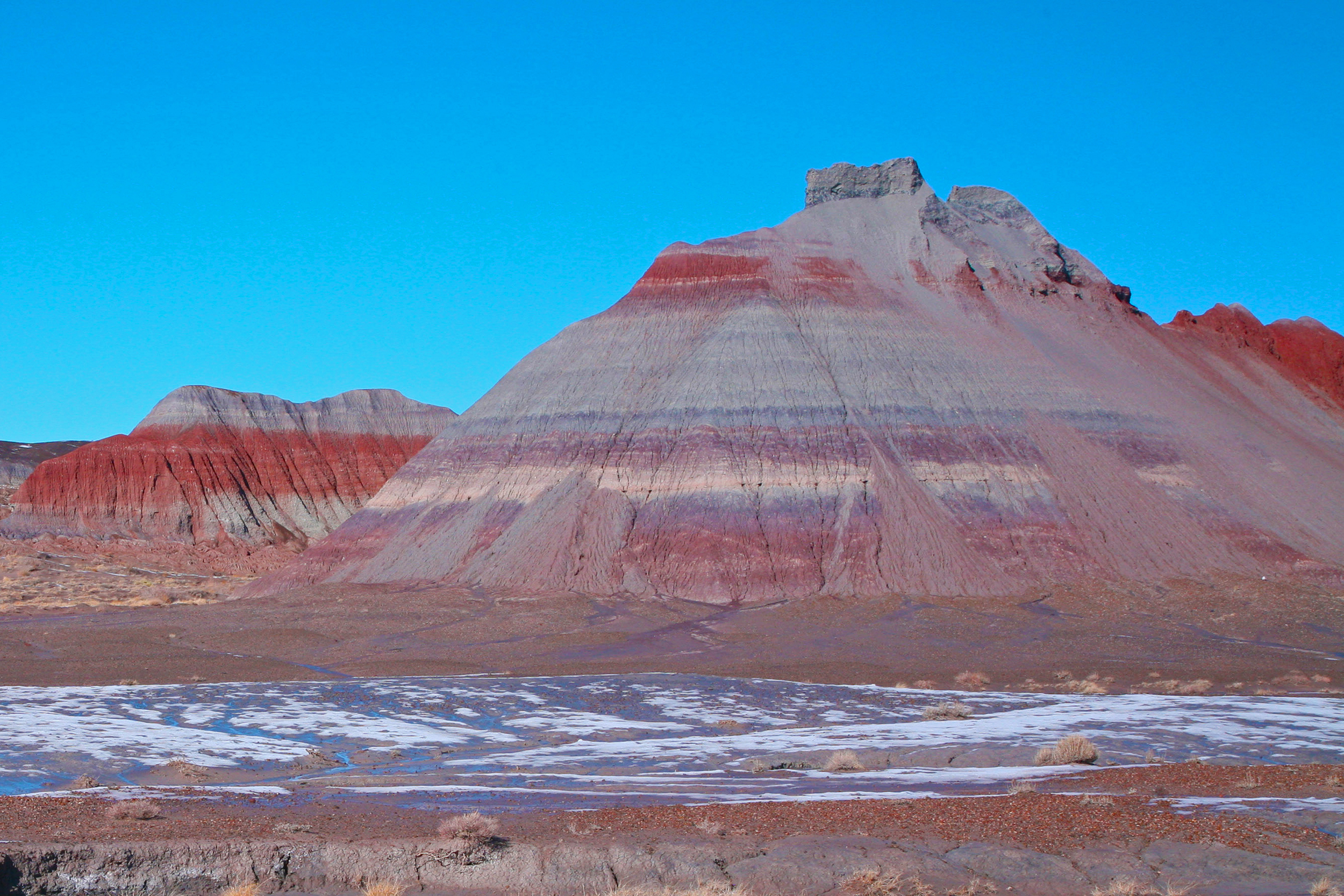
How Rocks Rusted on Earth and Turned Red
How did rocks rust on Earth and turn red? A Rutgers-led study has shed new light on the important phenomenon and will help address questions about the Late Triassic climate more than 200 million years ago, when greenhouse gas levels were high enough to be a model for what our planet may be like in the future.
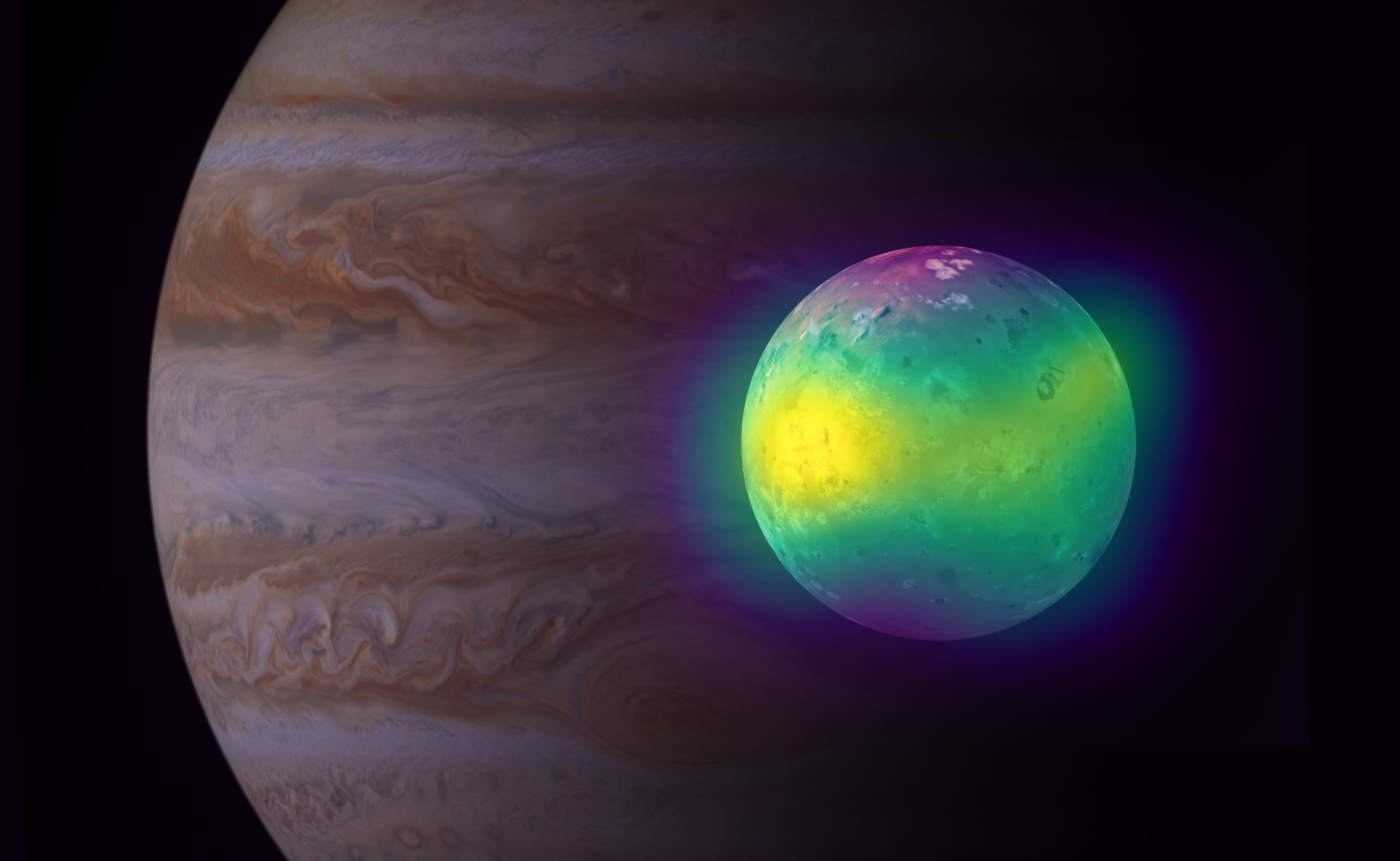
ALMA Shows Volcanic Impact on Io’s Atmosphere
New radio images from the Atacama Large Millimeter/submillimeter Array (ALMA) show for the first time the direct effect of volcanic activity on the atmosphere of Jupiter’s moon Io.
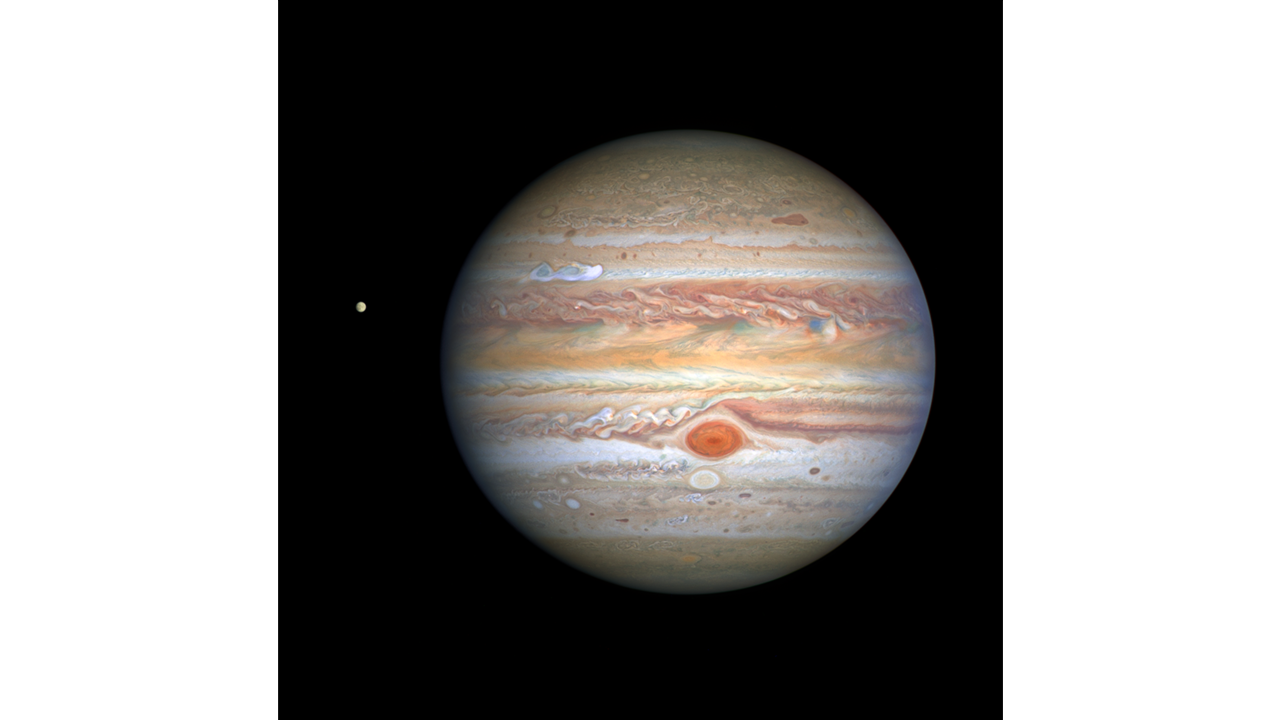
Hubble Captures Crisp New Portrait of Jupiter’s Storms
More massive than all the other planets combined, Jupiter truly is the king of our solar system. The swirling clouds, arranged in colorful, banded structures, change from year to year. The rich colors are produced by trace compounds in Jupiter’s predominantly hydrogen/helium atmosphere. Hurricane-force winds propel these clouds, and upwelling currents are ablaze with lightning bolts far more powerful than those seen on Earth.
The Hubble Space Telescope serves as a “weather satellite” for monitoring Jupiter’s stormy weather. The iconic Great Red Spot, a storm big enough to swallow Earth, shows that it’s shrinking a little in the Hubble images, but it still dominates the entire southern atmosphere, plowing through the clouds like a cargo ship.
Hubble astronomers patiently wait to get close-up snapshots as Earth make its nearest annual approach to Jupiter – an astronomical alignment called an opposition, when Jupiter is on the opposite side of the Earth from the Sun.
Ammonia sparks unexpected, exotic lightning on Jupiter
NASA’s Juno spacecraft – orbiting and closely observing the planet Jupiter – has unexpectedly discovered lightning in the planet’s upper atmosphere, according to a multi-institutional study led by the NASA/Jet Propulsion Laboratory (JPL), which includes two Cornell University researchers.
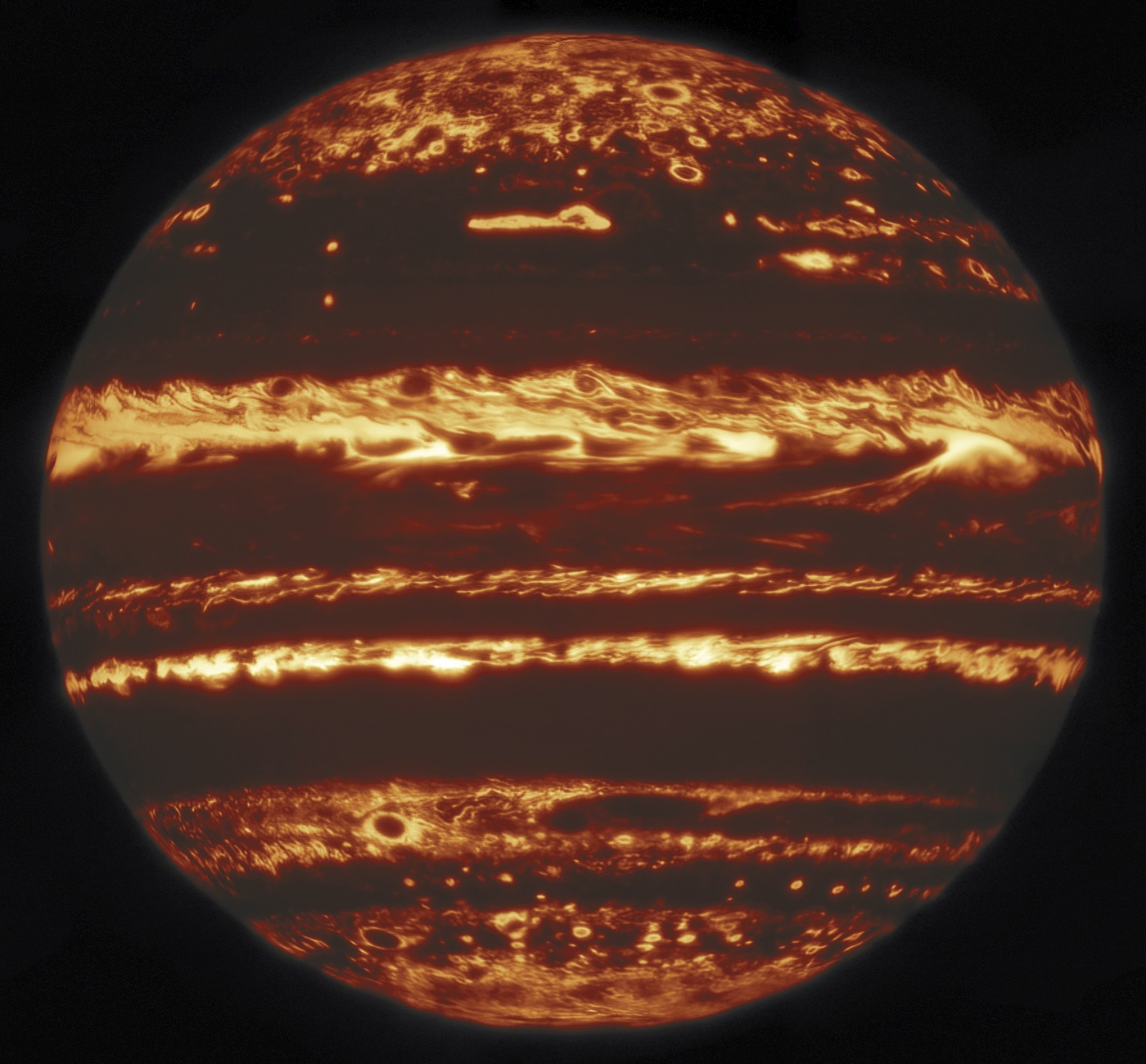
Gemini Gets Lucky and Takes a Deep Dive Into Jupiter’s Clouds
Researchers using a technique known as “lucky imaging” with the Gemini North telescope on Hawaii’s Maunakea have collected some of the highest resolution images of Jupiter ever obtained from the ground. These images are part of a multi-year joint observing program with the Hubble Space Telescope in support of NASA’s Juno mission. The Gemini images, when combined with the Hubble and Juno observations, reveal that lightning strikes, and some of the largest storm systems that create them, are formed in and around large convective cells over deep clouds of water ice and liquid. The new observations also confirm that dark spots in the famous Great Red Spot are actually gaps in the cloud cover and not due to cloud color variations.
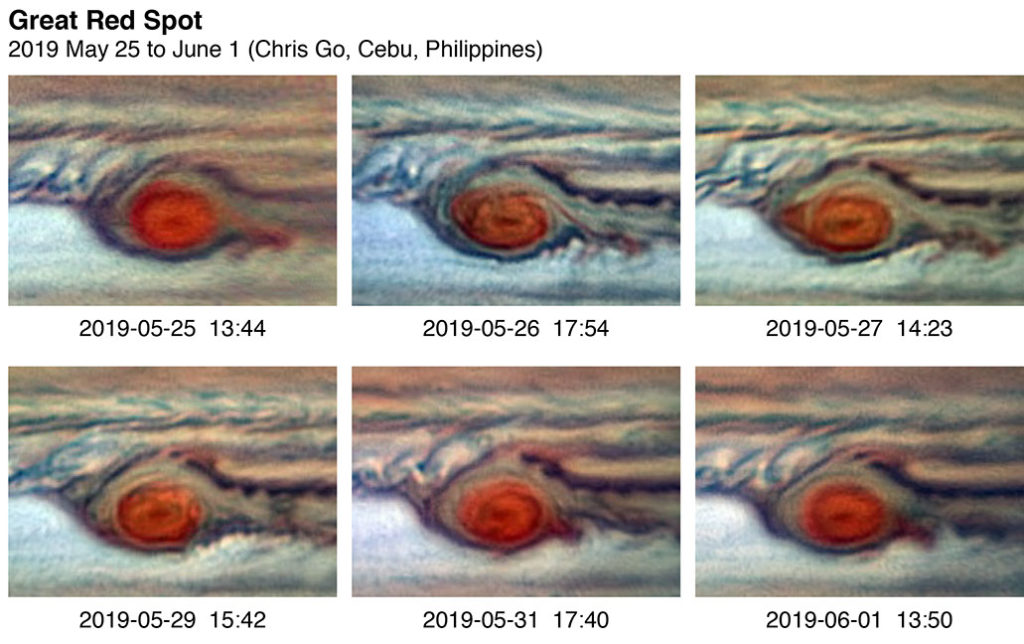
Reports of Jupiter’s Great Red Spot Demise Greatly Exaggerated
The shrinking of the clouds of the Great Red Spot on Jupiter has been well documented with photographic evidence from the last decade. However, researchers said there is no evidence the vortex itself has changed in size or intensity.
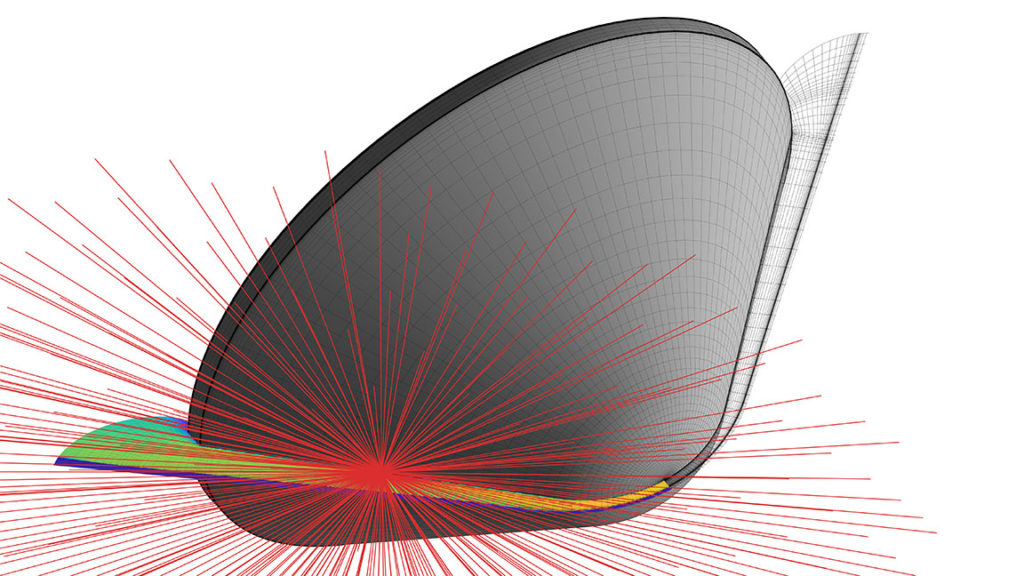
Analysis of Galileo’s Jupiter Entry Probe Reveals Gaps in Heat Shield Modeling
The entry probe of the Galileo mission to Jupiter entered the planet’s atmosphere in 1995 in fiery fashion, generating enough heat to cause plasma reactions on its surface. The data relayed about the burning of its heat shield differed from the effects predicted in fluid dynamics models, and new work examines what might have caused such a discrepancy.